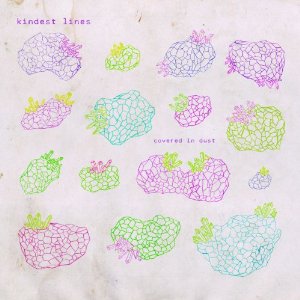Although often compared to Esben and the Witch and The Cure, this New Orleans group say their greatest debt is to producer and dubious socialite Phil Spector, and the three chord chasm of his fractured and cavernous pop creations. In Spector’s production, the judicious use of reverb and a bittersweet sensibility in songwriting combined to give a depth, a majesty and above all a melancholy to the simplest of hit-to-be confections. In Kindest Lines’ debut, the relationship between reverb and mood-setting couldn’t be more obvious, with the wall-of-sound idea undoubtedly present as a device and frame.
Singer Brittany Terry’s voice will be compared with the usual raft of ethereal female vocalists from Kate Bush to Elizabeth Frazer, forward to Rachel Davies or Zola Jesus. Terry’s particular take on the wisp-like and wistful is soft and often breathy without lacking substance, although it benefits from the diffusive power of reverb. Although chief songwriter Jack Champagne has vehemently spoken out against aping acts of the past, Covered In Dust owes much to the transatlantic cobwebs and shadows of 80s goth and atmospheric pop, with Cure-alike shimmering guitar, Siouxsie-like grand melancholy and the luscious reverb of the Cocteau Twins present throughout.
Final track ‘Colours Treasured’ goes even further, paying a suitably moody tribute to cold wave, with simple and sparse melodies providing the necessary remoteness and isolatory tension. Thematically Covered In Dust aims at the yearning of Spector-produced ‘Be My Baby’, but riding the negative space where sweetness and yearning bookend entropy and emptiness. Covered In Dust opens both of its careworn arms to learning through mistakes, concluding with cautious hope that "the future is real".
Kindest Lines will be considered derivative, and certainly in all fairness, they seem to wear at least their genre on their sleeves. It’s not hard to imagine Robert Smith hidden in their basement whispering "More Gretch!" "Write about a spider!" through the floorboards. What Covered In Dust does undeniably suffer from is a homogeneity in instrumentation, pace and general dynamic. Whether they coax Robert upstairs for some fully fledged derangement or set a black cat amongst the pigeons by introducing stylistic divergence, there is no doubt Kindest Lines are a fine addition to the current US wave of neo-neo-gothic pop and this album will contain at least one bus ride in the rain’s worth of memorable moments.


